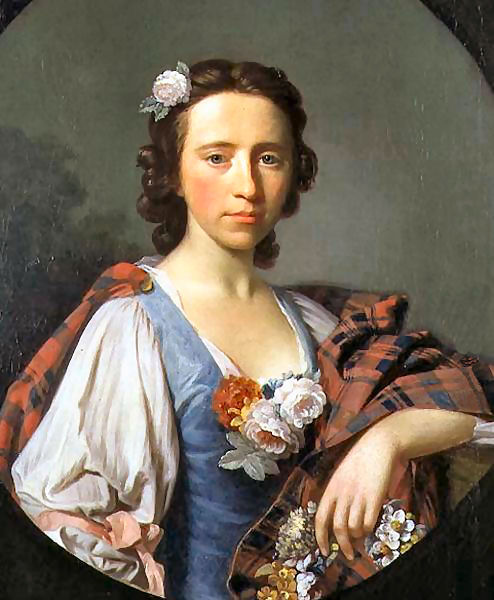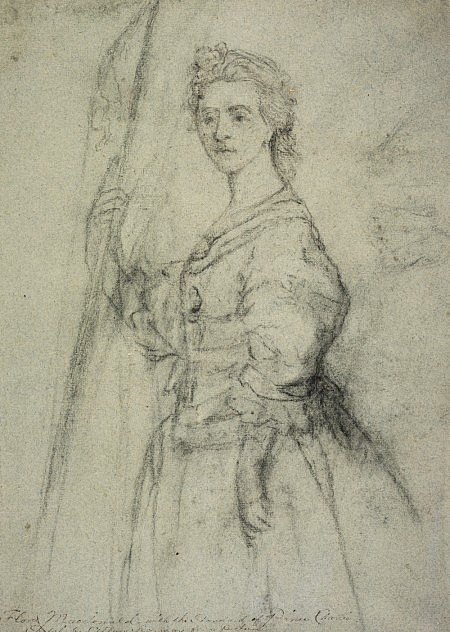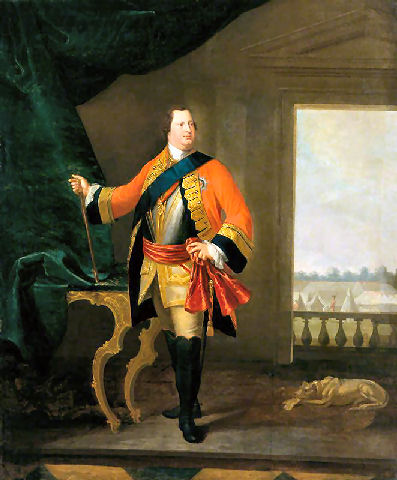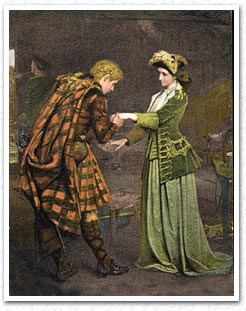Flora MacDonald (1725-1790)
Fionnghal NicDhňmhnaill
by Allan Ramsay (1713 - 1784)
In this portrait, painted in 1749 after
she had been released from the Tower of London and before her
marriage to Allan Macdonald of Kingsburgh in 1750, she wears in her hair the
white rose, a Jacobite
emblem; the flowers in her hand no doubt allude to her Christian name.
Ramsay's Flora takes on a
classical pose and the rural costume and flowers in her hair, and the
royal standard she proudly
holds, are reminiscent of the portrayal of mythological shepherdesses.
This chalk on paper drawing of Flora Macdonald was made by the famous
eighteenth-century portrait painter Allan Ramsay.
According to the inscription at the bottom, it was ‘for a picture’, but the only
painting of Macdonald by Ramsay (above) bears little resemblance to this sketch.
Flora MacDonald was born to Ranald and Marion MacDonald at Milton on South Uist in the Outer Hebrides, Scotland, in 1722. When Flora was about a year old, her father, a tenent farmer, died. After her mother remarried (to another MacDonald), it is believed that she lived with relatives, such as her father’s people Clanranald, who oversaw her education. Unfortunately, much information about Flora MacDonald’s early life is lacking substance and has taken on the characteristics of a folktale. John J. Toffey in A Woman Nobly Planned examines the historiography of Flora MacDonald, dispels many of the myths, and helps sort out the particulars of her adventures. The following comments draw heavily upon Toffey’s research as it is more grounded in historical method than many of the earlier tales of Flora MacDonald’s life. Any inconsistencies with local lore will be better explained in Toffey’s text. See references.
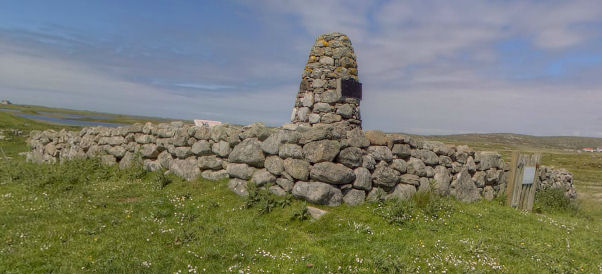
A large memorial cairn erected within the walls of an old building at Milton bears the following inscription: 'Clan Donald raised this cairn of remembrance to their kinswoman Flora MacDonald daughter of Ranald, son of Angus of Milton South Uist. She was born in 1722 near this place and spent her early life in the house that stood on this foundation.
Flora completed her schooling in Edinburgh and was visiting
her brother in South Uist
during the summer of 1746 when asked to assist Charles Edward Stuart,
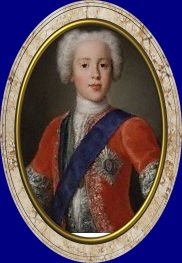
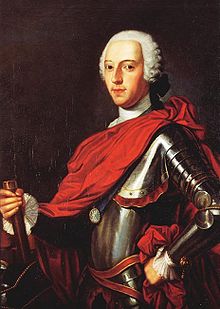
known as "Bonnie Prince Charles".
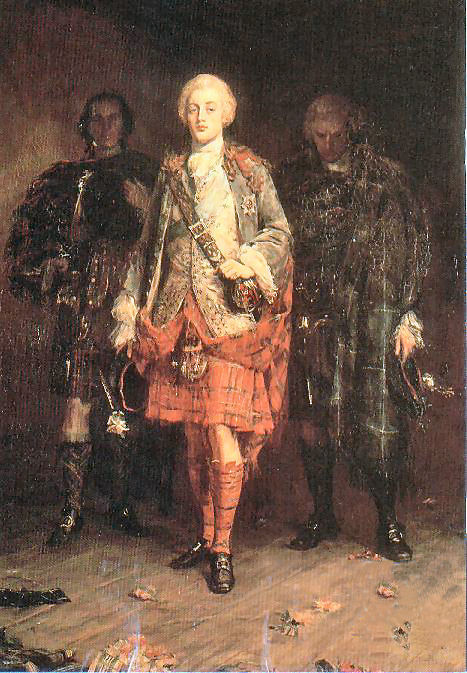
On April 16, 1746 Culloden Moor (about 6 miles East of Inverness) was the scene of an historic battle in the Scottish Jacobite rebellion led by the pretender to the British throne, Prince Charles Edward Stuart, who was attempting to depose George II, King of Great Britain.
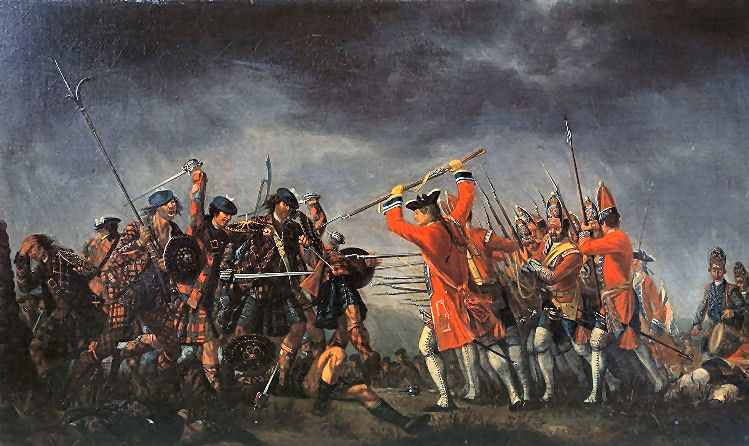
Duke of Cumberland
The battle resulted in a total rout of Charles Edward's army, consisting of
about 7,000 Highlanders, by a force of 9,000 British regulars led by the British
military leader and son of George II, William Augustus, Duke of Cumberland
(1721-1765)
![]()
It has been said that there was a brief romance between Bonnie Prince Charles and Flora MacDonald of Benbecula during that summer of 76. For two months Charles, being on the run after defeat at Culloden, had been jumping from hiding place to hiding place in the Outer Isles before he and Flora met. Now had it not been for a kinswoman of Flora's the two may never have met at all.
There are three ways of regarding the Prince of Scotland; there were the heart-loyal people who believed implicitly in his Divine Right to be King and were prepared to spill their last drop of blood for him; there were those who found the whole escapade frightening and unsettling after 30 years of Hanovers and either fought firmly against the Jacobites or subscribed to letters of gratitude and hero-worship sent in their name to the man others called 'Butcher Cumberland'; the third group were honest people, content enough with the stodgy Georges who had given them a kind of peace, people who had kin serving in their armies or in the King's Government, but who would not have sent to death a bonnie Stuart beauty like the Pretender Prince, not for all the ransom money offered by their government.
Now Flora was not pinning away for the Bonnie Prince but was deeply in love with her husband to be Allen MacDonald who was a redcoat officer throughout the campaign. Both her fiance' and her foster-father, Captain Hugh MacDonald of Sleat, were members of King George's army. But Flora would have never seen the Prince betrayed even though she had no sympathy for the Jacobites. It came about one day that Flora was asked to do more than "not betray". It seemed to those on the inside that she would be the most likely young woman on the island to guide Charles on the next stage of his journey to find refuge on the mainland.
When a Captain of the Troop first approached her she prudently
refused.
"I wish the Prince no ill, and would like to see him safe. But I
cannot join a plot like that for there are those of the King's men that are my
kin."
The Captain replied, "But it is your very own Foster-Father who has thought of this plan to have the Prince taken safely to Skye."
Knowing how kindly a man was her Foster-Father, Flora believed that indeed he would be behind such a plan as this. Not only that but she could see the disquiet that the Prince's presence had brought to Benbecula and knowing surely if he were gone away things would once again return to normal.
"What will be thought of me if I spend so much time alone with the Prince?" asked Flora, not really bothered by it but knowing people would talk.
"I will have Neil MacDonald attend you, but if you fear of your reputation Ma'am, I will wed you before the escape. I would do this for my Prince; though it would be no hardship or so great a punishment Ma'am." the Captain said gallantly.
Laughing, Flora said, "That sacrifice will not be necessary Sir but... " thinking of Allan, she hesitated and said no more on the matter.
"Your kinswoman Miss Allie MacDonald was also asked but she dare not serve the Prince, I thought you had more spirit than that Ma'am." said the Captain. And that was all that Flora needed to hear!
Also disputed is the reason for and the means by which Flora
MacDonald became involved in a plot to help usher Prince Charles Edward Stuart
to safety. Current scholarship indicates that it was likely through her
stepfather Captain Hugh MacDonald, despite his loyalty to the Crown. Regardless
of the circumstances, however, Flora obtained passports for herself and an Irish
servant named Betty Burke, who was the “Young Pretender” (the Prince) in
disguise. 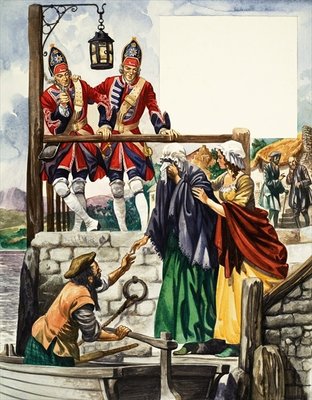
The Prince was to be disguised in a frock as "Betty Burke" an Irish maidservant. Flora thought the scheme "fantastical" but was persuaded to go ahead. June 20th 1746 was the day that the young Prince and Flora finally met and after a week of hiding, Miss Flora MacDonald, Neil MacDonald and the strange looking "Betty Burke" made the famous journey.
The unlikely pair set off from Uist on June 28, 1746 by boat
with a small crew of Highland sympathizers, rowing the boat to Skye evading
capture on the way and eventually landing between Uig and Mogstad in Kilmuir, at
what is now called Rudha Phrionnsa (Prince's Point). 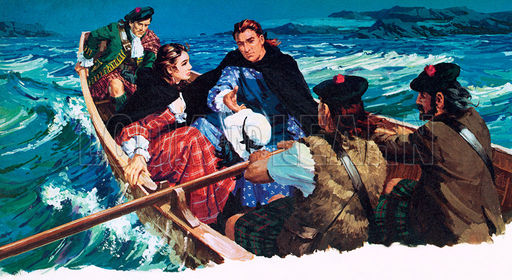 They hid overnight in
a cottage and then traveled, over the next few days, overland to Portree, at one
point avoiding some redcoat troops. The two conspirators parted ways at the inn
in Portree on June 30, 1746. Before he left for the island of Raasay and a ship to France,
the Prince gave Flora a locket with his portrait, saying "I hope, madam,
that we may meet in St James's yet". He sailed on the French
privateer L'Heureux on September 20, 1746. She never saw him again. After
arriving at Skye, Flora sent the boat crew back to Uist. It was those men who,
when confronted there by the King’s forces, betrayed the plan and the
whereabouts of the Prince and his guide.
They hid overnight in
a cottage and then traveled, over the next few days, overland to Portree, at one
point avoiding some redcoat troops. The two conspirators parted ways at the inn
in Portree on June 30, 1746. Before he left for the island of Raasay and a ship to France,
the Prince gave Flora a locket with his portrait, saying "I hope, madam,
that we may meet in St James's yet". He sailed on the French
privateer L'Heureux on September 20, 1746. She never saw him again. After
arriving at Skye, Flora sent the boat crew back to Uist. It was those men who,
when confronted there by the King’s forces, betrayed the plan and the
whereabouts of the Prince and his guide.
About ten days later, Flora was captured. She was imprisoned
about a year on
various ships and in Dunstaffnage Castle, Oban
and briefly in the Tower of London. She was released in 1747 under a
general amnesty. By the time of her release she had become a celebrity at
home and abroad. Flora maintained throughout her life that she helped the
fugitive as she would help any person in need. Although she became a Jacobite
heroine, the cause was never one to which she claimed loyalty.
She met Samuel Johnson, the English essayist during his tour of Scotland. Johnson described her as "a woman of middle stature, soft features, elegant manners and gentle presence."
On the 6th of November, 1750 occurred the wedding of Flora and Allan Macdonald, son of the Alexander Macdonald of Kinsgburgh, who befriended the Prince. He is described as being one of the most handsome and powerful Highlanders in his clan and possessed of all the qualities which constitute the true gentleman. They made their home in Flodigarry. Later, after the death of her husbands father, they moved to Kingsburgh.
In 1774, following difficult financial times, the couple emigrated to North Carolina with five of their seven children. They landed at Wilmington and traveled up the Cape Fear River to its furthermost navigable point: the Highland Scots community of Cross Creek (now Fayetteville) in Cumberland County.
Their eldest daughter Anne and her husband Alexander MacLeod arrived at about the same time. Her stepfather Hugh MacDonald and her half-sister Annabella were already in the colony. Annabella and her husband, Alexander MacDonald, lived at Mount Pleasant, Cameron Hill, now Cameron, about 20 miles Northwest of Cross Creek in modern Harnett County, North Carolina. There Flora and her family spent the winter of 1774-1775.
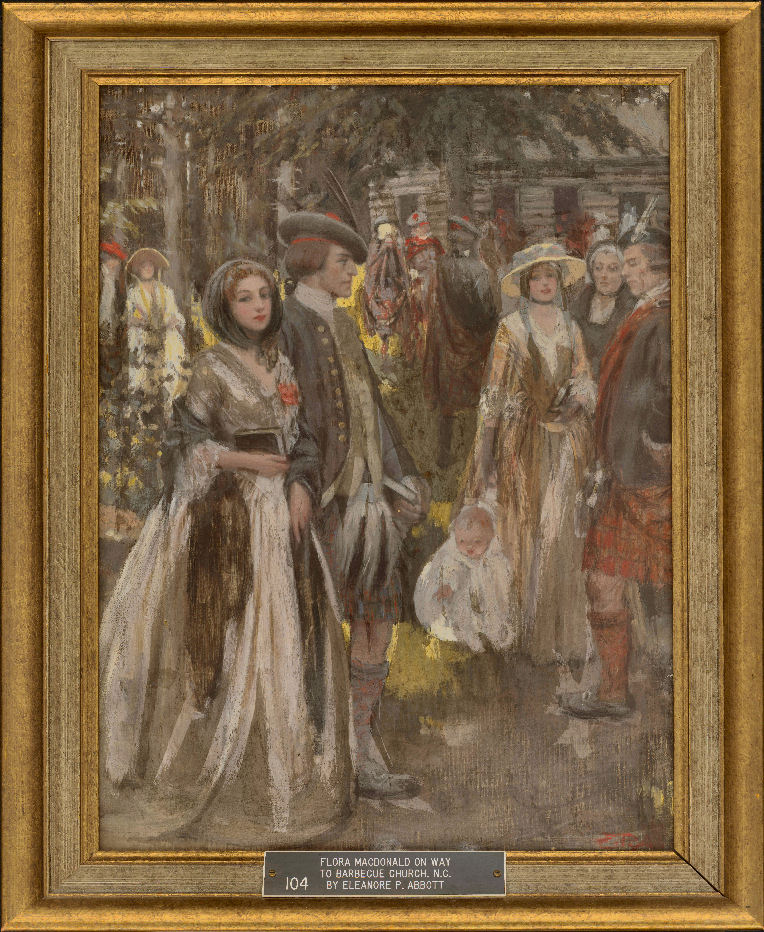
Presbyterian Historical Society, Presbyterian Church
(U.S.A.)
Courtesy of Leah Gass
Allan and Flora were members of Barbeque Church. A
description of Flora is
here.
History of Barbeque Church, document page 22 of 58
(14)
Later,
the family settled on a 500 acre estate named "Killegrey" along
Cheeks Creek, near Pekin, in present day Montgomery
County where they raised cattle and engaged in the profitable colonial trade of
producing pine products called "naval stores."
But before being allowed
to settle, Flora and her family had to sign an oath (promise) never to oppose
the British government.
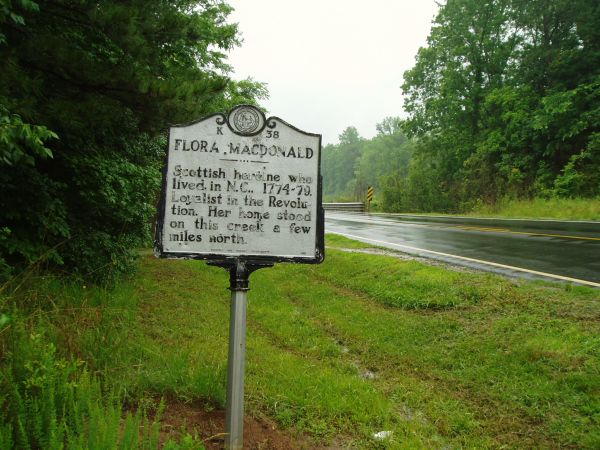 Hundreds of Highlanders who settled in North Carolina after Culloden were still
haunted by the oath which they had been obliged to sign. This fearsome document
which was not revoked until 1782 was calculated to keep back any Highlander who
signed it from even the appearance of disloyalty. The oath reads:
Hundreds of Highlanders who settled in North Carolina after Culloden were still
haunted by the oath which they had been obliged to sign. This fearsome document
which was not revoked until 1782 was calculated to keep back any Highlander who
signed it from even the appearance of disloyalty. The oath reads:
I, . . . . . .do swear and as I shall answer to God at the
great day of judgment, I have not, nor shall have
in my possession any gun, pistol or arm whatsoever, and never use tartan, plaid
or any part of the
Highland garb; and if I do so may I be cursed in my undertakings, family and
property; may I
never see my wife and children, father, mother or relation; may I be killed in
battle as a coward,
and lie without burial, in a strange land, far from the graves of my forefathers
and kindred -
may all this come across me, if I break my oath.
